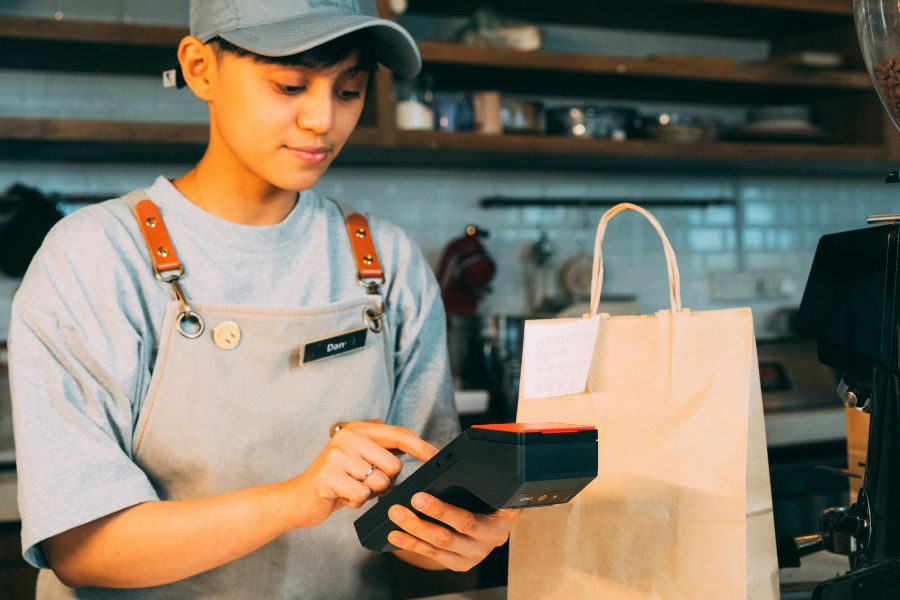The technological advance makes it simpler to keep an eye on the future of the POS market. As a retail business owner, you had better know how to boost sales and take the lead. Fortunately, you have been here. In this post, let’s look at how POS is projected.
What is POS?
POS stands for “Point of Sale,” and it refers to the location and system where a transaction is completed between a business and a customer. A POS system is a combination of hardware and software that allows businesses to process sales, track inventory, and manage various aspects of their operations. Here are some key components and functions of a typical POS system:
- Hardware: The hardware components of a POS system include a computer or terminal, cash register, barcode scanner, receipt printer, and in some cases, a payment terminal (credit card reader).
- Software: The POS software is the heart of the system. It’s responsible for recording sales, processing payments, managing inventory, and generating reports. Modern POS systems often include cloud-based software that allows for real-time data access and updates.
- Sales Processing: At the core, a POS system records and processes sales transactions. It calculates the total amount due, applies discounts or promotions, and handles various payment methods, including cash, credit cards, and mobile payments like Apple Pay or Google Wallet.
- Inventory Management: A POS system can track and manage inventory, updating stock levels as products are sold and generating alerts for reordering when stock runs low. This helps businesses maintain the right amount of stock and reduce the risk of overstocking or running out of products.
- Reporting and Analytics: POS systems generate reports on sales, inventory, and customer data. These reports help businesses make informed decisions about their operations, marketing, and future plans.
- Customer Management: Some POS systems include customer databases that store information on repeat customers, enabling businesses to offer loyalty programs, send targeted marketing messages, and provide personalized services.
- Employee Management: Many POS systems allow businesses to manage employee accounts, track sales performance, and handle permissions for different tasks like voiding transactions or providing refunds.
- Multi-Location Support: For businesses with multiple locations, a POS system can connect all locations to a central database, providing insights into overall performance.
- Integration: Modern POS systems often integrate with other business software, including accounting, e-commerce, and marketing tools, to streamline operations and improve efficiency.
POS systems are used in various industries, including retail stores, restaurants, bars, hotels, and service businesses. They play a crucial role in streamlining operations, improving customer service, and providing valuable data for business decision-making.
What is the future of POS market?
AI in POS systems
With the AI integration, retailers can make use of motion analytics and object recognition at the point of sale checkout station. There are also digital sensors, helping to fight off any loss. AI in the point of sale system can likewise assist in orders handling, stock management, highlighting product trends, promotion suggestions, staff management, and so on. For instance, the 1st cashier-less coffee store has proved how point of sale and AI can be one of the best collaborations for business growth.
Cloud POS
Speaking of the future of POS, you may have heard of the term “cloud tech”. It means the adoption of the Internet to make keeping and exchanging information or resources automatic. By using a Cloud POS, you can access your store transactions or sales information from any device, no matter where you are. A lot of businesses, regardless of the size, have started to integrate it into their operations. According to statistics, the Cloud-based POS market size expectedly reaches 6 billion USD by 2028 with a 22.5% CAGR.
Self-checkout and Contactless Payment
The Verizon Look Forward study showed that over 20 percent of respondents use self-checkout. Mobile payment systems become a favorable alternative to static POS counters in some stores. Speaking of contactless payment, you can expect it to thrive even more following 2023. Shoppers these days have highly appreciated the perks of this new and practical payment method and kept asking for its access. That justifies why many stores count on ConnectPOS, a reliable POS solution provider, to support their self-service approach. ConnectPOS’s ability to accept mobile payment methods and even more has enhanced the shopping experience.
Conclusion
Now that you have an idea of the future of the POS market. If you are looking for a trusted POS with excellent features, try ConnectPOS. As a top POS provider, ConnectPOS has served thousands of retail businesses from everywhere in the world. Reach us now!
ConnectPOS is a all-in-one point of sale solution tailored to meet your eCommerce POS needs, streamline business operations, boost sales, and enhance customer experience in diverse industries. We offer custom POS with features, pricing, and plans to suit your unique business requirements.




